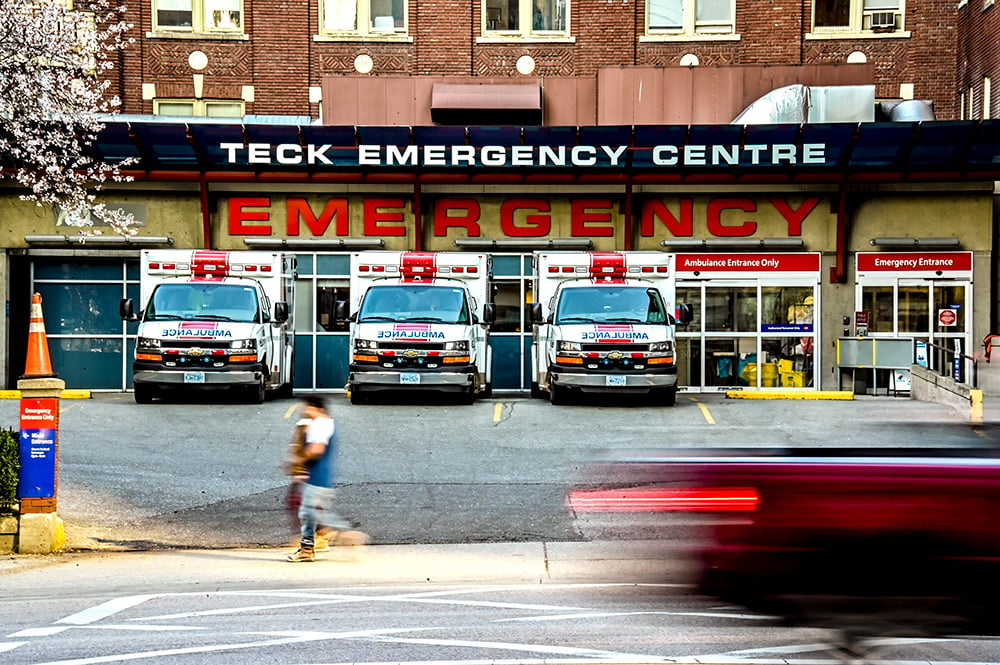British Columbians’ embrace of physical distancing measures have likely helped the province avoid a worst-case COVID-19 scenario, Provincial Health Officer Dr. Bonnie Henry said today.
“I’m starting to see some glimmers of hope that our trajectory has flattened out a bit,” she said.
Henry provided the first update on the province’s attempts to model the possible impact of the pandemic.
The models indicate that the province has enough hospital beds and ventilators to handle even a worst-case scenario.
But the hospitals in the North and Interior could be strained beyond their limits even under the most likely projections, health officials said.
The models used to project the spread of cases and demand for services were based on the trajectories of COVID-19 in South Korea, Hubei province in China and northern Italy.
The most likely outcome will be case numbers similar to or below levels in China’s Hubei province, provincial health officials said at a morning briefing.
That scenario would see a peak need for 438 ventilators, which help patients with the virus breathe.
But Northern Health would be 12 ventilators short of the projected demand and Interior Health would not be able to provide the life-saving devices to two patients.
The models are conservative, provincial officials said. They assume 13.8 per cent of people infected will require hospitalization and 4.7 per cent of cases will require critical care. In other jurisdictions, 11 per cent have required hospitalization and 4.4 per cent intensive care. The models estimate the average individual will be admitted five days after having their case confirmed, and stay 10 days in critical care or 12 days for non-critical patients.
The briefing did not include information on projections of the number of cases or deaths, or how the province would address the shortage in some regions.
Health Minister Adrian Dix said the models are intended to help the province plan and prepare.
“These are not expectations of what will happen here.”
Henry made similar points.
“We are going to have our own epidemic. These models are just a basis for change,” she said.
“We are confident that this gives us a good sense of where we are in our trajectory in B.C. compared to these other countries,” said Henry.
But the province is still developing plans to respond to anything from the best to worst-case scenarios, even though a northern Italy level of per-capita hospitalization is unlikely.
“There is value in our planning for these high-level responses,” said Health Minister Adrian Dix.
Seventeen hospitals have been identified as primary COVID-19 critical care centres. If B.C. were to see northern Italy levels of hospitalization, another 341 intensive care beds would have to be opened up in addition to 206 ICU beds. Ventilators for patients being transported or in lower levels of care would also have to be found.
It would also mean opening additional sites so non-critical patients without COVID-19 could be moved to create additional capacity for those with the virus.
Dix and Henry stressed the importance of being able to provide critical care for non-COVID-19 related illnesses.
The most strained for ventilators and beds in the worst-case scenario would be Interior Health, Northern Health and Fraser Health. The 100 ventilators that arrived in the province in the last week are being directed to those regions.
Health authorities have been asked to make staffing schedules for the next six weeks based on the projected needs.
More frontline workers are being directed towards ICUs, and approvals for trainee health professionals and those needing to be re-registered are being expedited to bolster the workforce to deal with the virus.
Dix and Henry stressed the modelling will change as more data becomes available on the spread in B.C.
“Next week they’ll be better, and the week after that they’ll be better,” said Dix.
Henry reported that physical distancing and other measures have already reduced the rate of transmission.
The rate per capita growth rate of cases was 24 per cent on March 4, before distancing was mandated. It’s fallen to 12 per cent since physical distancing measures were enacted.
But planning is still of the essence, Henry said, and physical distance is more important than ever to further slow transmission. ![]()
Read more: Health, Coronavirus, BC Politics
















Tyee Commenting Guidelines
Comments that violate guidelines risk being deleted, and violations may result in a temporary or permanent user ban. Maintain the spirit of good conversation to stay in the discussion.
*Please note The Tyee is not a forum for spreading misinformation about COVID-19, denying its existence or minimizing its risk to public health.
Do:
Do not: